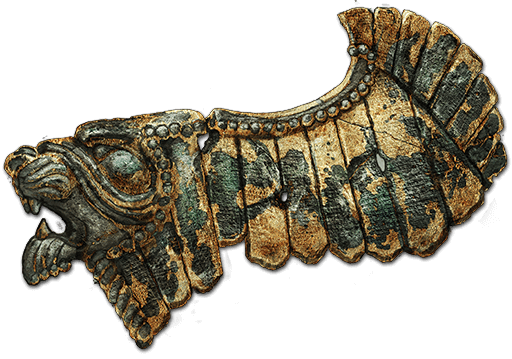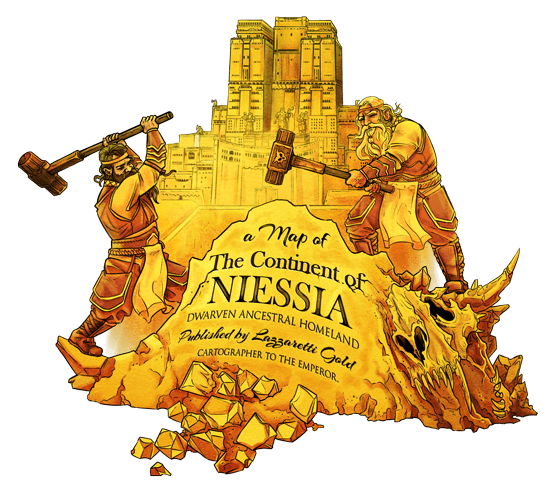S A R A T O F
 Saratof is a city of two capitals. Most important and most recently, it has become the Imperial Capital of the Kordavan Empire and the World of Chaldea, but for centuries longer, Saratof has been the capital of the kingdom of Roosh. It is arguably the most important city in Chaldea, not just for its political significance but also for its size, economy, military, culture, architecture, trade, and diversity.
Saratof is a city of two capitals. Most important and most recently, it has become the Imperial Capital of the Kordavan Empire and the World of Chaldea, but for centuries longer, Saratof has been the capital of the kingdom of Roosh. It is arguably the most important city in Chaldea, not just for its political significance but also for its size, economy, military, culture, architecture, trade, and diversity.
Population: Saratof, with a population of nearly half a million people, is the largest city of Chaldea. It was already one of the largest cities of Chaldea before Kordaava made it the Imperial Capital of World of Chaldea. Since becoming the Imperial Seat forty years ago, however, the city’s population has grown at an alarming rate, bringing with it all the problems common with such growth, taxing the city’s sewers, traffic, and housing. Saratof’s most violent slum, Anvil Park, is known for its crime and outcast dwarves, and organized crime is ubiquitous throughout the city.
Demographics: Saratof is the most diverse city of Chaldea, with communities of nearly every ethnic group imaginable. The largest ethnic population is the native Rooshians, called “Stofs,” but they comprise less than half of the overall population. The presence of embassies of nearly every kingdom of Chaldea have led to the migration of diplomats and administrators; the two legions of the Imperial Army have brought officers and soldiers of the legion; the vast sums of money spent on palaces and monuments have brought architects, craftsmen, and laborers; and the dominance of the Church of Set, centered here, has brought flocks of priests from Ta Shemau. Additionally, two of the largest, wealthiest dwarven clans of Chaldea have clan holdings in Saratof, and merchants from trading companies from all over Chaldea have offices in the city as well. And finally, there are the tourists who come to marvel at the glory of the God King. All these groups bring their families and servants, and many of them settle here to become permanent citizens, driven by the excitement of being in the heart of civilization, in the presence of the emperor.

Terrain: Saratof is mostly flat except for two large hills that are the clan holdings of dwarves. Saratof sits at the mouth of—and sprawls along both sides of—the mighty Libor River. The lands surrounding the city are the richest, most productive farmlands of Chaldea.
Economy: The wealth of Saratof is buttressed by several important sources of commerce. First, it is the most active port in Chaldea, with over a hundred ships sailing in or out each day to and from ports all over the world. Second, the Central Bank is based here, along with all the banking and accounting required to coordinate a global economy. Third, Imperial taxes flow to Saratof, where they are pumped back into the economy in many forms, most notably via the construction of grand works of architecture and civic monuments. Fourth, tithes from the churches of Set throughout Chaldea are routed through Saratof to fund the maintenance of a vast clergy, cathedrals, and works of art. And as if all that weren’t enough, one of the dwarven clans here, Clan Geldzahn, operates the largest mining conglomerate in all of Chaldea.
Military—Imperial: The Imperial Army is headquartered in Saratof at the Bastion, which simultaneously serves as the command center for all of the Emperor’s Legions and as the castrum of the Emperor’s Imperial Guard Legion. The Imperial Guard Legion, also referred to as the Chosen Ones, is commanded by Legatus Tarsis and is a double-size legion of over 10,000 men, with supporting auxilia of over 20,000 cavalry, artillerists, engineers, mercenaries, security agents, clergy, and support personnel.
Military—Regional: Rooshian society is ruled by a collection of princes, one of whom is appointed the Grand Prince of Roosh and retains this title for life. The current grand prince is Bogoslav Tihomir, whose territory includes Saratof and much of the surrounding countryside. Tihomir rules from the Royal Palace of Tihomir in the old city portion of Saratof, and his personal military of elite archers and cavalry is stationed here.
Locations of Note: Government
Imperial Complex: The Imperial Complex is the heart of Saratof—indeed, is the heart of Chaldea. This is where Emperor Kordaava lives, worships, and rules.
• A large central plaza where visitors arrive to the complex, large enough for a crowd of tens of thousands of people. The entrance is to the north. To the west is the Hoot Weret of Set, to the south is the Imperial Palace, and to the east is the Bastion.
• Imperial Palace. An epic palace befitting the God-Emperor. Here, Kordaava lives and holds court.
• Chancellor of the Treasury. The central government building for managing the global economy and the emperor’s wealth.
• Ministry of Justice. The highest court of law in Chaldea.
• Hall of Reliefs. A building dedicated to housing maps of the empire.
• Hoot Weret of Set. The central temple of Set in Chaldea. Here, Hulsan, the Ma’at Menbit of Set, rules and governs Set’s worldwide religion.
• The Bastion. The castrum of the Imperial Guard Legion and the command center for Kordaava’s military.
• The Hall of Ambassadors. Also called the Visitors’ Palace, where the most important of Kordaava’s visitors are housed.
• The Swamp. The emperor’s private dock, with slips for several ships.
• Obelisk of Law. As with most cities of Kordaava, this monument, inscribing the laws of the emperor, is erected in the complex. It sits before the Ministry of Justice.
The Senate Discourse: A large governing facility dedicated to the Senate. The Senate convenes in this location, which is complete with breakout rooms and housing.
Soldier’s Hospital: A hospital dedicated to the treatment of soldiers and former soldiers of the Imperial Army.
Locations of Note—Royalty and Nobility
Grand Vizier’s Palace: The palace of Lalfroth, the Grand Vizier, Imperial Consul, and elder dragon. Colloquially referred to as the Igloo Palace.
Celestia: The second-largest palace in Chaldea, the home of Sibyl Serrari, the Imperial Consul of Civic Development.
The Sunshine Citadel: The palace home of the Tihomir family. Here lives Bogoslav Tihomir, Imperial Consul chairman, the Senate Chair, and the Grand Prince of Roosh. Tihomir’s personal military is stationed here as well.
Palace of Culture: An immaculate palace built by Senator Sibyl Serrari, dedicated to the cultures of Chaldea.
Royal Hunting Grounds: A large woodland park dedicated to providing both mundane prey and more exotic beasts for hunting by the royalty.
Locations of Note—Religious
Temple of Consecration. A prominent temple of Set, known for consecrations of holy artifacts and appointments of hemnedier (priests of Set).
Temple of War. A prominent temple of Set, known for training warriors of the faith.
Temple of Inquisition. A prominent temple of Set, known for the training and oversight of inquisitors of Set. Uhlotep, the second-most senior priest of Set after Hulsan and Arch Inquisitor, administers from here. Of particular interest is the Chamber of the Adder, where the Inquisitors’ Convocation is held.
Locations of Note—Civic
Saratof Harbor. A vast harbor, warehousing, and customs zone dedicated to seafaring travel and commerce. During busy seasons, ships might lay anchor for days waiting for their turn to dock. A fleet of small harbor boats serve as taxis to transport crews and officers across the harbor or to and from their ships anchored in the queue.
Colossus of Kordaava. One of the largest monuments to Kordaava stands on a small man-made island in the center of Saratof Harbor.
Markets. There are numerous markets of all varieties scattered about the city. The most important is the area adjoining the Saratof Harbor, where all manner of goods from countries around Chaldea are bought and sold.
The Guild Masters Hall. There are numerous guildhalls in Saratof dedicated to every type of commercial endeavor one can imagine. The Guild Masters Hall is the guildhall for guild masters from all these guilds. Here, guilds, guild masters, and guildhalls are recognized, evaluated, and organized.
University of Saratof. The large, sprawling campus of the University of Saratof is dedicated to the education of the public. All manner of arts and sciences are studied here. The Emperor’s Library is housed here, where scribes from around the world have tried to document the knowledge of the universe.
Forge Park. A public park where sits a functional forge, free for use by the general populace. As a practical matter, gangs of outcast dwarves control its access.
Locations of Note—Dwarven
The dwarven influence on Saratof and even on the Empire itself bears special consideration. Over the centuries, a majority of the dwarven population of Chaldea has migrated to the Dwarven Homeland, a mythical place far underground. As these dwarves departed, they left their landholdings to other dwarves, serving to concentrate the wealth of their kind into a few prominent clans that remain behind. A key component of dwarven wealth is the financing of large constructions, such as palaces, civic monuments, temples, and important government buildings. As part of these financial arrangements, the dwarves finance the construction of these buildings but retain ownership of the lands these are built on, charging rent of the land back to the building owners. While these rents are small, the holdings are vast in scope, resulting in tremendous annual revenues to the dwarven clans.
Geldhaul. The clan home of the dwarven Clan Geldzahn, one of the wealthiest families of Chaldea. The head of the clan, Grantal Geldzahn, holds the Imperial Consul position of Imperial Treasurer, and his office monitors the revenues and expenditures of the Imperial government. Geldhaul sits atop an extensive mining operation connected by underground tunnels so vast they extend across the borders into neighboring kingdoms. The clan home itself is mostly comprised of halls, chambers, and vaults carved out of one of the two prominent hills of Saratof, Geldzillia.
Steadhaul. The clan home of the dwarven Clan Geldfast, another of of the wealthiest families of Chaldea. The head of the clan, Garl Steadfast, is the Imperial Consul of the Central Bank, in charge of banking operations throughout the empire, laws and licenses to banks, minting of the Emperor’s Gold Sovereigns, and proposed exchange rates between these and the local currencies of the kingdoms of Chaldea.
Cloudforge Palace. Not the clan home of Clan Cloudforge but a palace of more human design, for members of the clan and their guests when business takes them to the capital. The palace was repossessed from a long-forgotten Rooshian prince who failed to keep up with his mortgage payments to the Cloudforge Clan.
The Dwarven Hall of Records. Holds the records of dwarven ancestry dating back to the Claw-Hammer War. All births, deaths, marriages, and migrations of dwarves throughout Chaldea are recorded here under the close supervision of Seneschal Eli Graybeard.
The Dwarven Hall of Commerce. A large location of business where many international trade deals are negotiated and monitored.
The Dwarven Hall of Craft. A large hall dedicated to crafting and smithing. Also serves as the guildhall for various guilds in these industries.
History of Saratof
Pre-1,000 Years Ago. Before the dragons, two dwarven fortress-mines were located in the current-day hills of Geldzillia and Steadzillia. These fortress-mines were called Hammer and Spike, and the dwarven city built up around them was called War Hammer.
Approximately 1,000 Years Ago. During the Claw-Hammer War, the dragons took War Hammer and used the deep-water harbor to dock Tannaluvian ships, which were used to bring humans, orcs, and monsters from other worlds to Chaldea in order to wage war against the dwarves.
Approximately 950 Years Ago. After the dragons tired of the war and the Wyrm Accord dissolved, two elder dragons, Zemelga and Daraneith, had a falling out and vied for control of War Hammer. Losing the fight, Daraneith fled and was pursued by Zemelga, who was also known as the Berserker. Daraneith led Zemelga out into the Great Sea, where she eventually shook the pursuit. While Zemelga was gone, however, an unlikely alliance between orcs and humans, angry at the dragons for how long the war had dragged on, took control of a Tannaluvian ship and demanded to be transported back to their home worlds. When Zemelga returned, he destroyed the rebels by annihilating the ship with a storm of disintegration lightning. After Tannaluvian mentalists took revenge for the loss of their ship by slaying Zemelga, Daraneith returned to War Hammer and took command of the city.
With the rebellion crushed, humans and orcs blamed each other, which led to a bloody civil war. The orcs were based in Hammer and Spike but were pushed down deeper into the old dwarven underground highways as the humans drove them out, presumably with Daraneith’s support. These humans were mainly Perts, ancestors of the Perts in present-day Perrin.
Year –910. The dragons may have won the Claw-Hammer War, but someone forgot to tell the dwarves. After losing so much, the dwarves were determined to achieve a win against the dragons and chose Hammer and Spike as their battleground. After several decades of preparation, dwarves with veteran dwarven axemen from all over Tamica came up from below Hammer and Spike, up through the very tunnels the orcs were driven down into. They slew Daraneith and subsequently drove the Perts out of the area that surrounds present-day Saratof.
Years –910 to –880. Elated, the victorious dwarves rebuilt War Hammer with the dream of reestablishing it as the first post-war dwarven city on the surface. But this was too tempting of a target for dragons, and they razed the city. So, the dwarves rebuilt it, and then the dragons razed it again. After this second razing, the dwarves continued working the land as normal but left War Hammer in ruins, depriving the dragons of anything interesting to raze.
Years –800 to –600. Rooshian warbands began settling in present-day Roosh, fighting for the rich farmlands of the lower Libor River. For two centuries, dwarves regularly fought Rooshians who thought they could take War Hammer for themselves.
Throughout this period, the dwarven population here and elsewhere in Chaldea dropped precipitously as dwarves discovered passages deep under the earth that would lead to the “Dwarven Homeland.” Thousands of dwarves left their cousins on the surface of Chaldea to take this long pilgrimage to a distant, better land.
Years –562 to –487. The Perts returned and, rather than fight the dwarves in their heavily fortified Hammer and Spike, decided to build a new city, Yare, on the eastern side of the Libor River. Yare was well defended with walls and a large fortress, Fort Findley. In fifty-one years, Yare was attacked nine times by the Rooshians—and the Perts managed to hold them off each time.
With their population numbers declining even more, the dwarves, seeing the determination of the humans to control the mouth of this important waterway, envisioned a grand scheme to side with the Rooshians in driving out the Perts, so they entered into an alliance whereby the dwarves would own the land but rent it back to the Rooshians, in addition to providing financing for their growth.
Year –486. With the help of the dwarves, Prince Saratof of the Rooshians took Yare and Findley and merged them with War Hammer and the hills of Hammer and Spike to form the city-state of Saratof.
Year –452. Roosh achieved statehood under the rule of Saratof’s daughter, Princess Sophie, after she defeated or enlisted all the tribes of the region. Saratof was made the capital of Roosh.
While Roosh would engage in many wars after this point, Saratof was never again sacked or even seriously threatened by land.
Year –222. Aimians blockaded Saratof, stopping all trade into and out of the city, demanding a payoff. The Stofs refused and simply waited it out. After two costly years of maintaining a large naval presence far from home, the Aimians abandoned the blockade for greener pastures elsewhere.
Year 0. Marcosta Kordaava was crowned Emperor of Chaldea in Saratof and appointed Saratof as his worldwide capital.
C H A L D E A P E D I A












